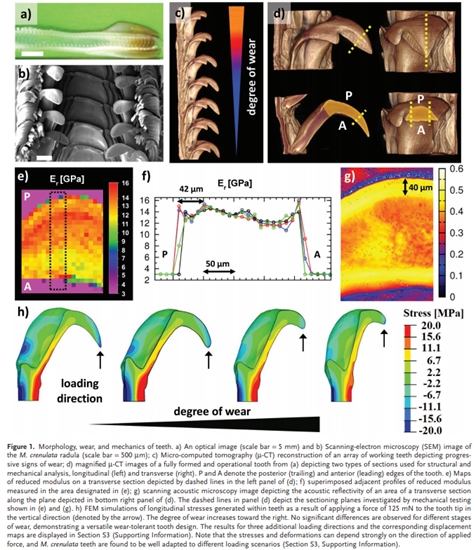Materials Nanoarchitecturing via Cation-Mediated Protein Assembly: Making Limpet Teeth without Mineral
Abstract
Teeth are designed to deliver high forces while withstanding the generated stresses. Aside from isolated mineral-free exception (e.g., marine polychaetes and squids), minerals are thought to be indispensable for tooth-hardening and durability. Here, the unmineralized teeth of the giant keyhole limpet (Megathura crenulata) are shown to attain a stiffness, which is twofold higher than any known organic biogenic structures. In these teeth, protein and chitin fibers establish a stiff compact outer shell enclosing a less compact core. The stiffness and its gradients emerge from a concerted interaction across multiple length-scales: packing of hydrophobic proteins and folding into secondary structures mediated by Ca2+ and Mg2+ together with a strong spatial control in the local fiber orientation. These results integrating nanoindentation, acoustic microscopy, and finite-element modeling for probing the tooth’s mechanical properties, spatially resolved small- and wide-angle X-ray scattering for probing the material ordering on the micrometer scale, and energy-dispersive X-ray scattering combined with confocal Raman microscopy to study structural features on the molecular scale, reveal a nanocomposite structure hierarchically assembled to form a versatile damage-tolerant protein-based tooth, with a stiffness similar to mineralized mammalian bone, but without any mineral.






